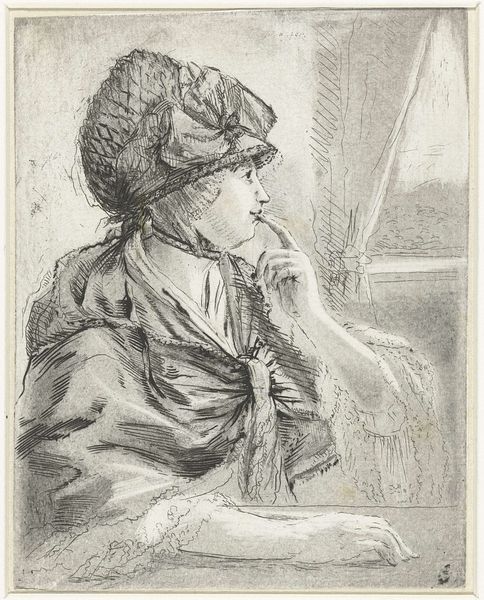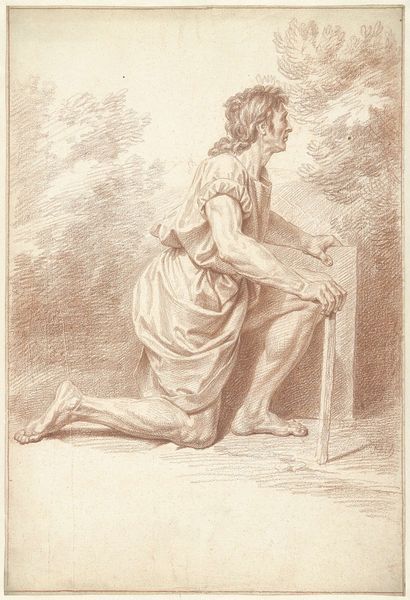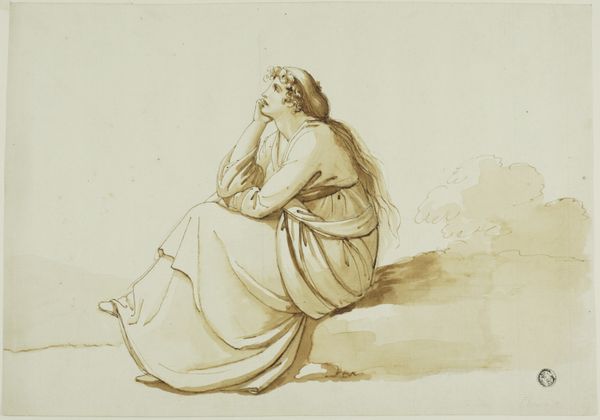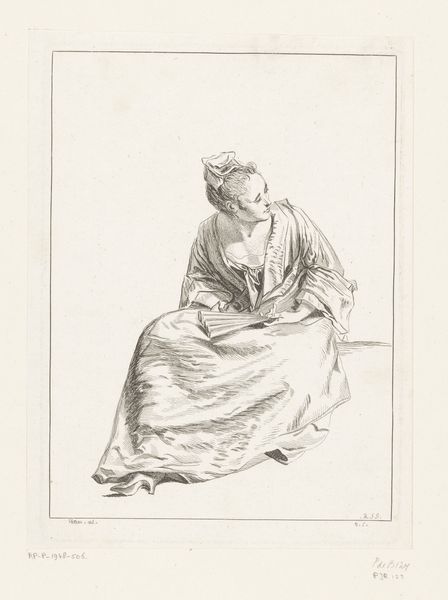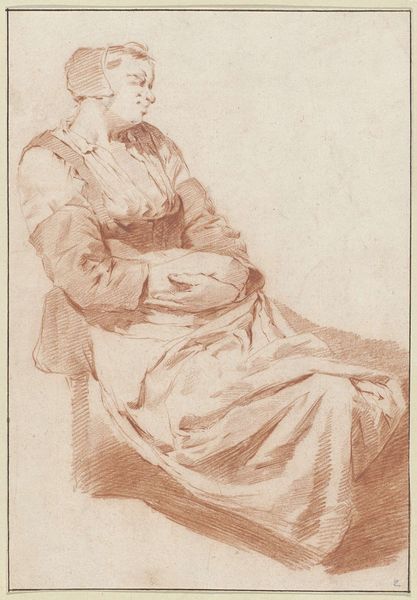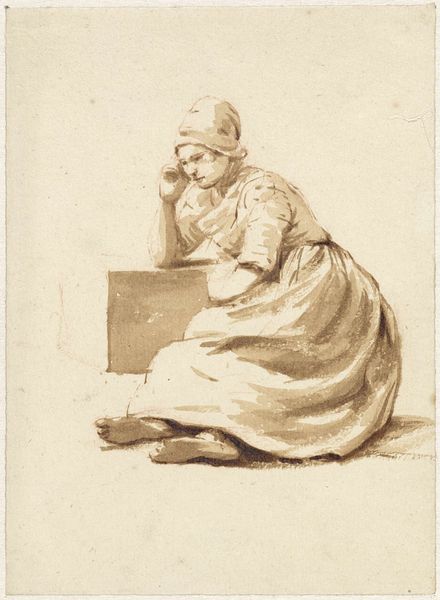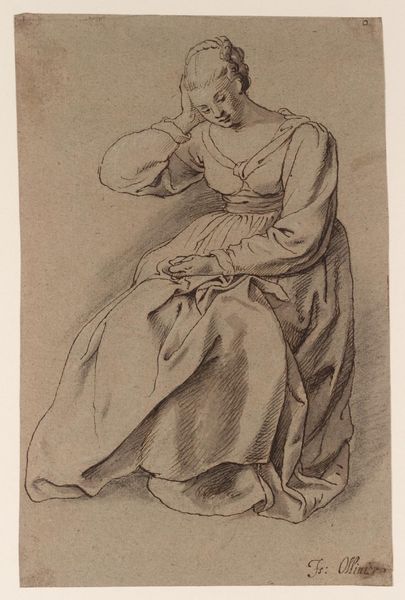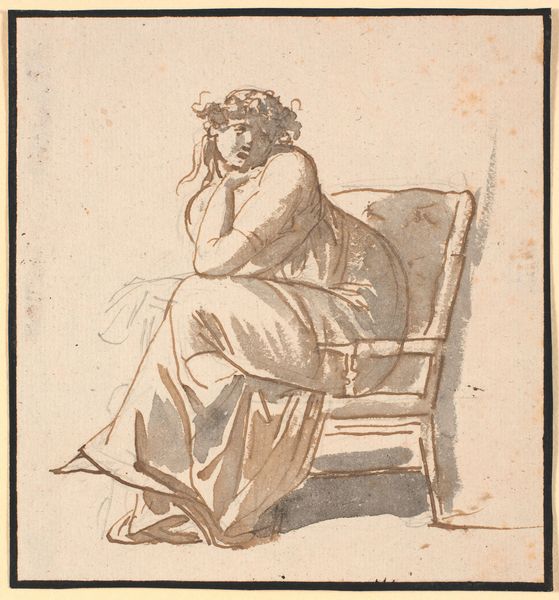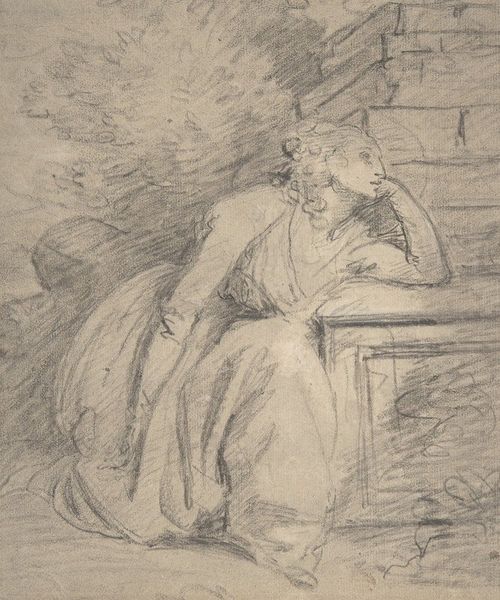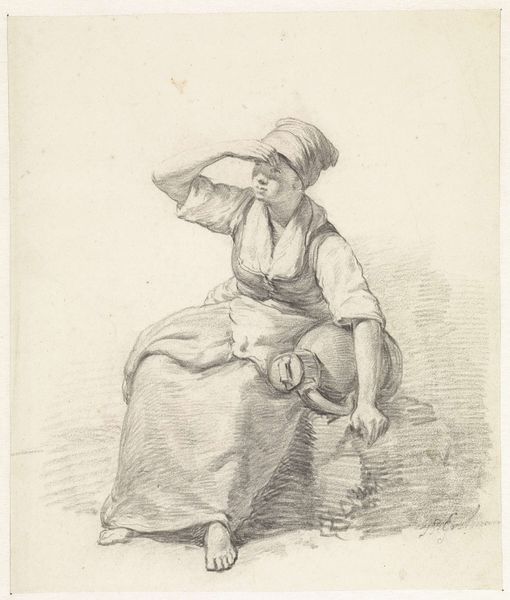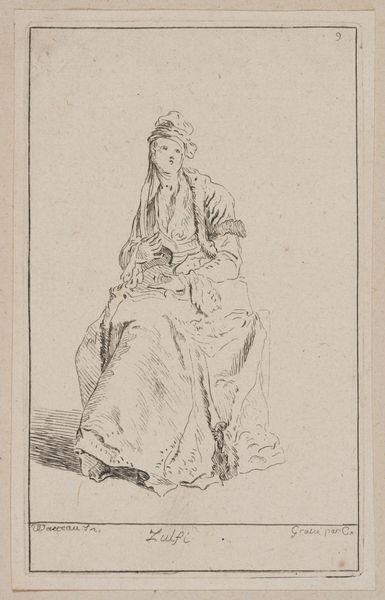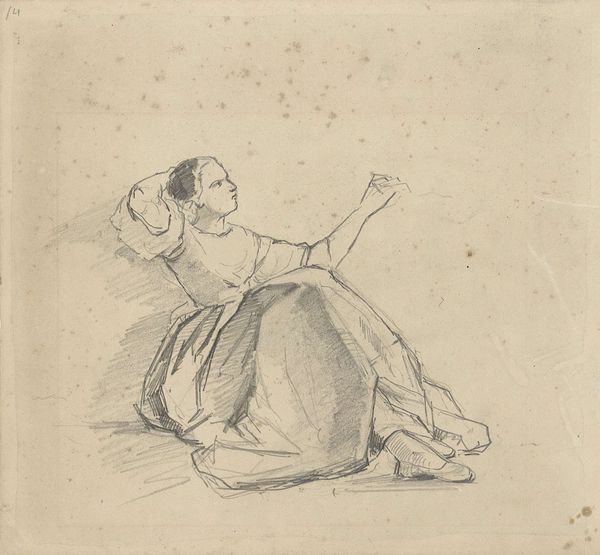
drawing, pencil
#
portrait
#
pencil drawn
#
drawing
#
pencil sketch
#
charcoal drawing
#
pencil drawing
#
romanticism
#
pencil
#
portrait drawing
#
realism
Dimensions: height 250 mm, width 197 mm
Copyright: Rijks Museum: Open Domain
Curator: This drawing, entitled "Zittend boerenmeisje," or "Seated Peasant Girl," was created using pencil in 1824 by Arnoldus Johannes Eymer. I find it striking for its simultaneous capture of realism and romanticism. Editor: My initial reaction is one of quiet contemplation. There's a gentle wistfulness in her gaze. It is amazing that just a simple drawing using pencil strokes can evoke such depth and character. What do you find significant about the work’s historical context? Curator: Well, Eymer worked during a time of considerable social change in Europe, even unrest. The art world saw the rise of Realism alongside Romanticism, each responding to the Industrial Revolution in very different ways. Eymer seems to navigate both—he acknowledges the "real," everyday laboring class through his subject, yet idealizes the girl by means of a classical, almost idealized rendering. Editor: It’s interesting to me that you say idealizes, because while she is depicted with some softness, her bare feet and posture suggest a kind of groundedness that speaks to her lived reality, rather than an idealized fantasy of rural life. Her gaze draws me—there's something so knowing and subtly challenging in her glance away from us. It resists easy consumption or idealization, at least for me. Curator: That's a fair point. I think my immediate read leans into art history, and the prevailing trends of idealizing peasantry. But her direct gaze certainly pushes back against that. Eymer's composition certainly contributes. He's not shying away from the texture and physicality of her labor. Her placement on what looks like a large stone, a potential building block or boundary marker, also seems very deliberate to me, creating this sense of a firm, anchored existence. Editor: Precisely! And, beyond its formal composition, I keep thinking about the role and the agency of women, especially rural working women. To have them viewed as central subjects is an incredible moment in this period. Where art became interested in what previously had been under the radar or unnoticed altogether, it opens new interpretations in relation to history. Curator: Indeed. Eymer gives voice to this previously unacknowledged or even overlooked sector of the population in this quietly profound sketch. It speaks volumes to social identity at the time. Editor: Absolutely. A reminder that the narratives we create, and that museums display, must actively question and engage the absences and presences that artworks reveal in the social, political, and personal landscapes.
Comments
No comments
Be the first to comment and join the conversation on the ultimate creative platform.
